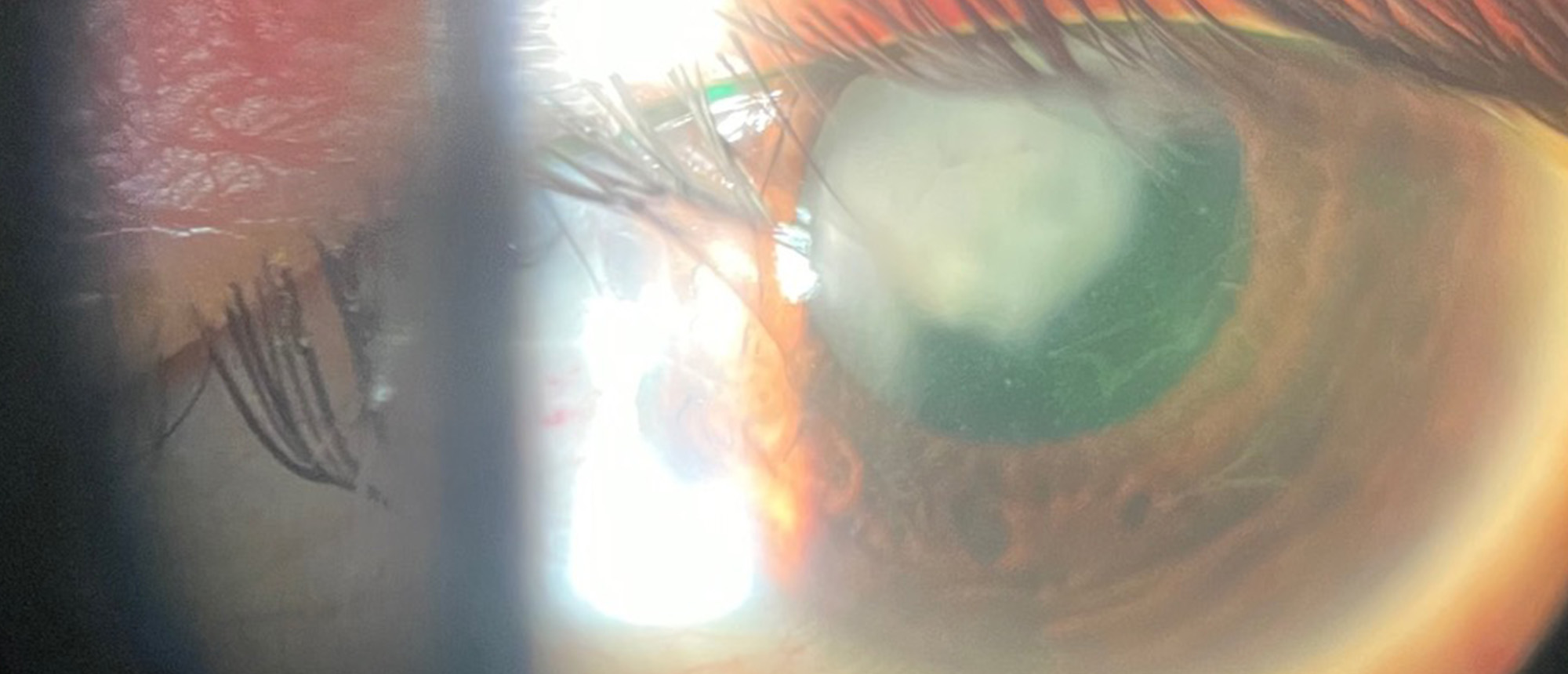
Mixed Mechanism Glaucoma Secondary to Retained Lens Material
A patient with a past ocular history of diabetic cataracts status post cataract extraction with posterior chamber intraocular lens insertion 28 years prior to presentation, proliferative diabetic retinopathy with macular edema treated with intravitreal dexamethasone implants and subsequent development of steroid induced glaucoma managed with three topical agents, along with history of vitreous hemorrhage and tractional retinal detachment status post pars plana vitrectomy presents emergently with severe eye pain and vomiting three days following Nd:YAG laser capsulotomy. On presentation, visual acuity is count fingers and intraocular pressure is 50 mmHg on dorzolamide, timolol, and brimonidine. Slit lamp examination shows diffuse injection, microcystic corneal edema, focal nasal shallowing of the anterior chamber, moderate anterior chamber reaction, intracapsular posterior chamber intraocular lens with fluffy whitish material posterior to IOL obstructing the visual axis. Gonioscopic exam reveals focal superonasal angle closure. B-scan ultrasound shows no vitreous opacities and ultrasound biomicroscopy shows opacity posterior to IOL inducing lens tilt and focal impingement on the angle. A diagnosis of mixed mechanism glaucoma secondary to retained lens material was made. Anterior chamber paracentesis, oral carbonic anhydrase inhibitor, topical antihypertensives, and topical steroids failed to lower intraocular pressure, and patient underwent urgent pars plana vitrectomy with removal of retained lens material. Postoperatively, patient regained baseline visual acuity and intraocular pressure was maintained in mid-teens on one topical agent. Slit lamp examination demonstrated a deep anterior chamber, and interval Humphrey visual field and optical coherence testing showed no signs of glaucomatous progression.
Presentation Date: 04/25/2024
Issue Date: 05/10/2024
Please log in or click on ENROLL ME to access this course.

